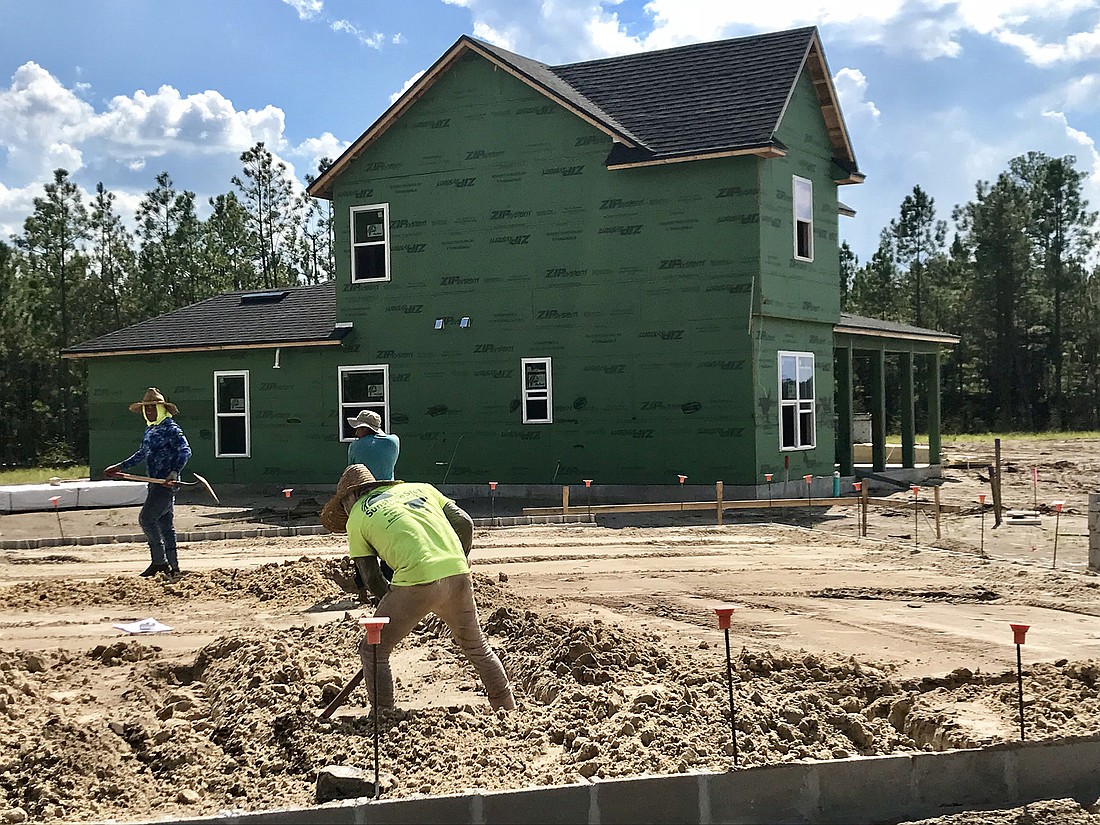
Finding a qualified, licensed and available plumber, carpenter, electrician or other trade professional to build or repair homes in Northeast Florida has become almost as hard as picking the correct lottery numbers.
Before the Great Recession hit, catapulting the country into an economic tailspin, homes were being built at a frenzied pace, locally and nationally.
As a result, there were plenty of skilled employees and firms that could be called upon and would respond rapidly to a service call or a request for a job estimate.
The market crash, however, left many of those workers stranded, as jobs dried up and the phone calls stopped.
A large portion of those people were forced to find new avenues to make a living, with many leaving the construction industry for good.
Curtis Hart, a developer and Northeast Florida homebuilding industry veteran, said he has seen statistics showing that the area lost 60 percent to 70 percent of its labor workforce because of the recession.
In the years after the downturn, the homebuilding industry has seen a steady incline. The number of homes being built in the region continues to climb, although not at the levels before the crash.
While the industry has rebounded, the number of people returning to physically demanding trades or high school graduates choosing a career in the trades has not kept up.
Many construction jobs are taking longer than normal because there aren’t enough workers.
And they are taking not just days or weeks more, but sometimes months, according to local leaders like Bill Garrison, the executive officer of the Northeast Florida Builders Association.
Garrison told a group of sales associates and marketers at a NEFBA Sales and Marketing Council breakfast that projects are delayed as much as two months because of the labor shortage.
Many of the developers, homebuilders and business owners said they blame the school system for the shortage.
They said students – whether they attend a public or private institution – aren’t offered the chance to study topics other than basic courses like math, science and English, along with basic elective classes like band, art or a foreign language.
“Everyone should be exposed to the trades. It needs to start out in high school,” Hart said, adding that many schools used to offer classes like wood and metal shop, home economics and auto mechanics.
Hart and others said one of the biggest issues is that too many people falsely believe that a college degree is necessary to be successful.
However, NEFBA’s training director, Charlie Libretto, said that students graduating from the organization’s four-year apprenticeship program often make more than those who just obtained their bachelor’s degree.
He said once the graduates pass their final tests and become a certified journeyman in their selected skill, they can start out making around $20 to $25 an hour.
The labor shortage has some companies turning down work or asking clients to be patient.
Eric Belley, who co-owns North Atlantic Painting Co. in Fernandina Beach, said that he can’t find enough experienced employees.
He said it isn’t just a local problem, but is happening throughout the country. The painting company also operates in Maine and deals with the same issue there.
“The trades over the last generation have been stereotyped as a second-class occupation,” he said. “That’s starting to catch up to us, as we don’t have as many skilled laborers anymore.”
@Jay_Schlichter
(904) 356-2466